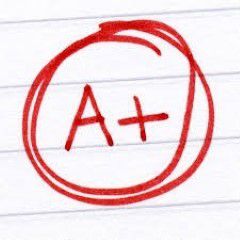Week Five Homework Assignment Complete Solution
Week Five Homework Assignment
1. A wholesale distributor stocks and sells low flow toilets to contractors for use in commercial office buildings. The estimated annual demand for the toilets is 5,475 units. The estimated average demand per day is 15 units. The purchase cost from the toilet manufacturer is $125.00 per unit. The lead time for a new order is 3 days. The ordering cost is $100.00 per order. The average holding cost per unit per year is $2.50. The distributor has traditionally ordered 250 units each time they placed an order. Based upon using the distributor’s current ordering model:
a. What is the average number of units in inventory based upon ordering 250 units each time an order is placed?
b. How many orders per year will be necessary based upon ordering 250 units each time an order is placed?
c. What is the average dollar value of inventory based upon ordering 250 units each time an order is placed?
d. What is the total annual cost (Purchase Cost + Ordering Cost + Holding Cost) based upon ordering 250 units each time an order is placed?
e. What is the optimal reorder point based upon ordering 250 units each time an order is placed?
2. The president of the wholesale distributor has recently heard about the EOQ model and is interested in learning whether or not using this model would allow the company to reduce its annual costs by optimizing the number of orders placed each year and the number of toilets purchased in each order. The estimated annual demand for the toilets, estimated average demand per day, purchase cost from the toilet manufacturer per unit, lead time for a new order, ordering cost per order and average holding cost per unit per year remain the same as stated in the scenario for the current ordering model. Based upon using the EOQ model (with instantaneous receipt):
a. What is the economic order quantity (EOQ) that will minimize inventory costs?
b. How many orders per year will be necessary based upon using the EOQ?
c. What is the average number of units in inventory based upon ordering using the EOQ?
d. What is the average dollar value of inventory based upon ordering using the EOQ?
e. What is the total annual cost (Purchase Cost + Ordering Cost + Holding Cost) based upon using the EOQ?
f. What is the optimal reorder point based upon using the EOQ?
3. The wholesale distributor has traditionally relied upon an instantaneous receipt model in which the material associated with each order is received in a single batch. The toilet manufacturer has suggested to the president of the wholesale distributor that he might want to consider agreeing to accept receipt of ordered material incrementally over a period of time rather than in a single batch as a means for reducing total annual costs. The toilet manufacturer has advised that his factory’s daily production rate is 20 toilets and the set-up cost for each production run is $250. The estimated annual demand for the toilets, estimated average demand per day, purchase cost from the toilet manufacturer per unit, lead time for a new order, ordering cost per order and average holding cost per unit per year remain the same as stated in the scenario for the current ordering model. Based upon using the EOQ model without instantaneous receipt (a.k.a., production run model):
a. What is the optimal order quantity without instantaneous receipt?
b. What is the maximum number of units in inventory without instantaneous receipt?
c. What is the average number of units in inventory without instantaneous receipt?
d. What is the average dollar value of inventory without instantaneous receipt?
e. What is the total annual cost (i.e., Purchase Cost + Ordering Cost + Holding Cost) without instantaneous receipt?
f. What is the optimal reorder point without instantaneous receipt?
g. How many set-ups per year will be necessary without instantaneous receipt?
4. The toilet manufacturer has proposed a quantity discount schedule for toilets as reflected in the following table for consideration by the president of the wholesale distributor as a means to potentially reduce his total annual costs.
Discount Number
Quantity Ordered
Unit Cost Discount
1
0 to 1,000
0%
2
1,001 to 2,000
10%
3
2,001 and over
15%
The estimated annual demand for the toilets, estimated average demand per day, purchase cost from the toilet manufacturer per unit, lead time for a new order, ordering cost per order and average holding cost per unit per year remain the same as stated in the scenario for the current ordering model. Based upon using the quantity discount model:
a. What order quantity will allow the wholesale distributor to minimize total annual inventory costs (Purchase Cost + Ordering Cost + Holding Cost) by taking advantage of the proposed discount pricing?
b. What is the total annual cost (Purchase Cost + Ordering Cost + Holding Cost) based upon taking advantage of the proposed discount pricing?
5. The president of the wholesale distributor is concerned about the possibility of stockouts causing a loss of customer confidence and loyalty and is interested in maintaining safety stock in inventory to prevent potential stockouts. Based upon using the safety stock models:
a. Assuming demand is normally distributed with a mean of 15 units and a standard deviation of 3 units, and a constant lead time of 3 days, what is the reorder point necessary to provide a 97% level of service?
b. Assuming demand is constant at 15 units per day, and lead time is normally distributed with a mean of 3 days and a standard deviation of 1 day, what is the reorder point necessary to provide a 97% level of service?
c. Assuming that demand is normally distributed with a mean of 15 units and a standard deviation of 3 units, and lead time is normally with a mean of 3 days and a standard deviation of 1 day, what is the reorder point necessary to provide a 97% level of service?
Week Five Homework Assignment Complete Solution
1. What is the average number of units in inventory based upon ordering 250 units each time an order is pl...




Online Users
-
 Studyacer
Today
Studyacer
Today





A+ - Thank you!
Thanks for the positive feedback!